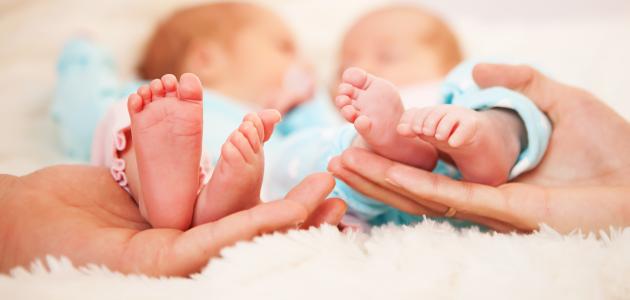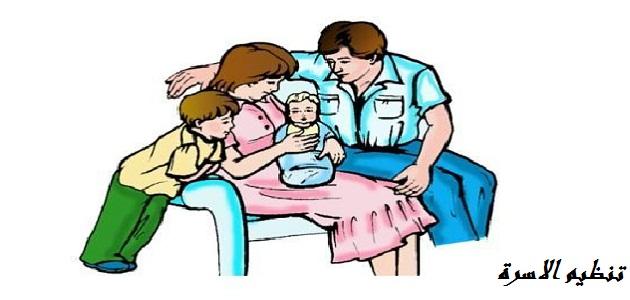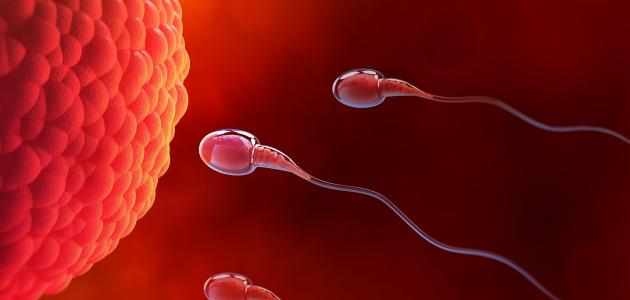Birth
During the last trimester of pregnancy, a pregnant woman notices many physical changes, including difficulty breathing and frequent urination, as a result of the increase in the size of the child and pressure on the internal organs of the mother, and the pregnant woman may suffer from heartburn, swelling of the ankles, fingers, and face, hemorrhoids, and a feeling of pain when touching the breast The leakage of a milk-like fluid from the breast known as colostrum, the protrusion of the navel, sleep problems, increased movement of the baby, and contractions that can be a sign of the approaching due date . [1]
During the ninth month, the fetus continues to grow and mature, as the lungs develop almost completely, and the reactions of the fetus become more coordinated as it becomes able to close the eyes and close them, rotate its head, and respond to sounds, light and touch, and the child descends to the bottom of the pelvis so that his head is facing towards a canal. Childbirth, and in the ninth month the length of the fetus is approximately 45-50 cm, and its weight is approximately three kilograms. [2]
Birth symptoms in the ninth month
The symptoms of childbirth differ from one woman to another, and each one of them has a story and a story that differs from the other, and the symptoms of childbirth in the ninth month include the following: [3] [4]
- The descent of the child to the bottom of the pelvis: With the approaching delivery date, the pregnant woman feels some comfort and the ability to breathe improves, as a result of the child's low level, and its stability in the pelvic floor, which reduces pressure on the diaphragm.
- Clear or bloody vaginal secretions: during pregnancy, the cervix remains blocked by the formation of a thick mass of mucus that acts as a plug that prevents bacteria from reaching the uterus, and during preparation for childbirth in the ninth month, the cervix begins to relax and expand, and this mucous mass becomes thin, which It causes clear or pinkish secretions streaked with blood, and it is worth noting that these secretions may appear minutes, hours, or even days before the start of labor.
- Rupture of the membranes and the descent of the water of the head: The rupture of the membranes and the descent of the water of the head known as the amniotic fluid can occur in approximately 10% of pregnant women, and the descent of the water of the head may occur while the woman is at home, and often when she is in bed, and sometimes the amniotic sac may separate or The fluid leaks out of it before labor, and urine may leak out in a woman as a result of the uterus being directly above the bladder, which makes the distinction between amniotic fluid and urine difficult for some women, and it is worth noting that the amniotic fluid has no smell, while urine is characterized by a distinctive smell. An indication of the necessity to contact the doctor urgently when the woman is sure that water has broken out and the membranes have ruptured.
- Increased urge to urinate: The noticeable increase in the need to urinate is due to the fall of the fetus's head down the pelvis, and the resulting increase in pressure on the bladder.
- Cervical dilation and expansion: can begin cervical dilation and expansion before the date of birth days or weeks, and is detected through physical examination of the holder.
- Thinning of the cervix: In addition to the expansion and expansion of the cervix, it becomes thin during the weeks preceding childbirth, which helps to stretch and expand more easily.
- Feeling active and energy: A pregnant woman feels a sudden flow of energy several weeks before the due date despite the fatigue she used to feel during pregnancy, and most of the time the energy flow is accompanied by a sense of urgency to get things done or to make plans for the child before the due date.
- Diarrhea: Pregnant women feel a greater need to empty the contents of the intestine, in addition to suffering from diarrhea or loose stools during the days before labor.
- Other symptoms: They include the following: [5]
- Change the feelings and emotions they change between the spirited, and mood , anxiety, or lack of patience.
- Having trouble sleeping .
- Feeling of constant pain in the lower back or abdomen, and cramps similar to those experienced by women before menstruation.
Labor contractions
It can be said that strong and regular contractions are a sign of the imminent date of labor, as the muscles of the uterus begin to contract and relax successively, which helps to push the child out, and when real labor begins, contractions continue for a period ranging between 30-70 seconds, and the interval between these contractions ranges between 5 -10 minutes, and these contractions are so strong that a pregnant woman cannot walk or talk with them, and they also become stronger and more close over time. [6] It is worth noting that labor goes through three stages, and they can be explained as follows: [7]
- The first stage of labor and childbirth: This stage is distinguishedThe pregnant woman feels regular contractions, which causes the cervix to thin or dilate to allow the fetus to move into the birth canal, and the first stage is the longest of the three stages, and it can be divided into two stages, namely; The stage of early labor and the stage of active labor; During early labor, the pregnant woman feels light and irregular contractions, and with the beginning of the opening of the cervix, the pregnant woman may notice transparent, pink or bloody secretions from the vagina, and it should be noted that the duration of early labor cannot be predicted, but it is relatively long for women who They become pregnant for the first time, but it becomes shorter during the later stages of pregnancy, as for the active labor stage, it is characterized by the extension of the cervix from 6 cm, reaching 10 cm, and the contractions become stronger and closer to each other, as they become regular, and the pregnant woman may feel her legs cramping In addition to nausea, the water of the head may descend during this stage, and most often the stage of active labor lasts from four to eight hours.
- The second stage of labor: During this stage, the baby is delivered and born, and this stage may take a period ranging from a few minutes to a few hours or more.
- The third stage of labor: During this stage, the placenta is delivered within 5-30 minutes after the baby is born, but some women may have this stage about an hour.
References
- ↑ "Stages of pregnancy" , www.womenshealth.gov , Retrieved 13-5-2019. Edited.
- ↑ "Fetal Development: Stages of Growth" , my.clevelandclinic.org , Retrieved 13-5-2019. Edited.
- ↑ "Signs Of Labor" , americanpregnancy.org , Retrieved 11-5-2019. Edited.
- ↑ "10 early signs and symptoms of labor" , ww.medicinenet.com , Retrieved 11-5-2019 . Edited.
- ↑ "Signs of labor" , www.babycentre.co.uk , Retrieved 11-5-2019 . Edited.
- ↑ "CONTRACTIONS AND SIGNS OF LABOR" , www.marchofdimes.org , Retrieved 13-5-2019. Edited.
- ↑ "Labor and delivery, postpartum care" , www.mayoclinic.org , Retrieved 13-5-2019. Edited.






